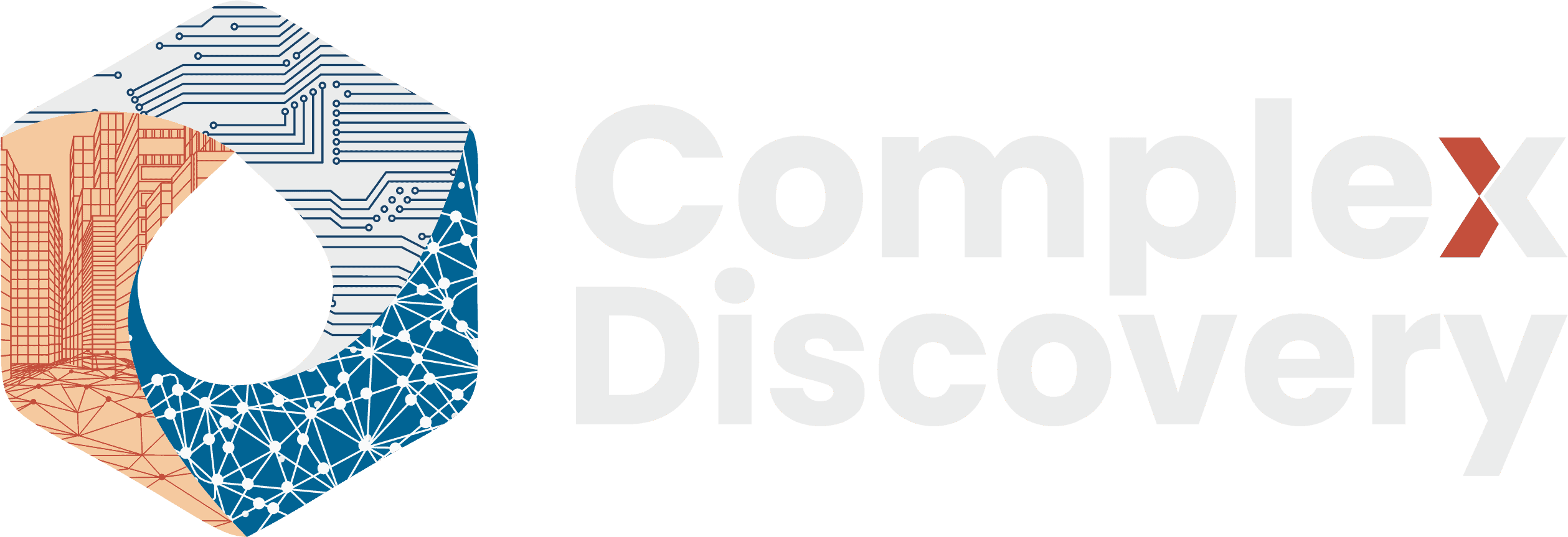Editor’s Note: Strategic transactions in the U.S. are holding steady, even as economic pressures mount. The latest Hart-Scott-Rodino (HSR) filing data through May 2025 reveals not a retreat, but a recalibration, signaling a transactional landscape marked by intention and resilience. Despite major new HSR regulatory requirements and increased filing thresholds, dealmakers continue to pursue opportunities with greater focus and sophistication.
For cybersecurity, information governance, and eDiscovery professionals, this steady deal cadence presents key opportunities to demonstrate value in an environment that prizes security, compliance, and operational foresight. Volatility in monthly filings, especially after the February 2025 rule changes, underscores the need for adaptability and expertise as regulatory scrutiny intensifies.
Content Assessment: Strategic Signals: May 2025 HSR Filings Reveal Steady M&A Amid Market Shifts
Information - 94%
Insight - 93%
Relevance - 93%
Objectivity - 94%
Authority - 93%
93%
Excellent
A short percentage-based assessment of the qualitative benefit expressed as a percentage of positive reception of the recent article from ComplexDiscovery OÜ titled, "Strategic Signals: May 2025 HSR Filings Reveal Steady M&A Amid Market Shifts."
Background Note: The Hart-Scott-Rodino (HSR) Act established the Premerger Notification Program, requiring certain mergers and acquisitions to be reported to the Federal Trade Commission (FTC) and the Department of Justice (DOJ) for antitrust review. This program ensures that transactions meeting specific thresholds are evaluated for their potential impact on competition before they are finalized. The HSR filing process plays a critical role in preserving competitive markets by identifying and addressing potential risks, such as monopolistic practices or reduced consumer choice.
Under the program, companies must submit detailed documentation about the transaction and the parties involved. A waiting period—typically 30 days—follows, allowing regulators to review the deal and determine whether further investigation is needed. This process can impact transaction timelines and requires robust compliance and information governance frameworks to manage the regulatory requirements.
Industry News – Antitrust Beat
Strategic Signals: May 2025 HSR Filings Reveal Steady M&A Amid Market Shifts
ComplexDiscovery Staff
Through May 2025, corporate deal activity in the United States demonstrates remarkable resilience despite mounting economic pressures. Hart-Scott-Rodino (HSR) premerger notification filings through the first eight months of Fiscal Year 2025 (October 2024 through May 2025) have totaled 1,362 transactions, with 148 filings reported in May alone. This reveals a transactional landscape characterized by measured corporate behavior and strategic recalibration. This environment presents both challenges and opportunities for professionals in cybersecurity, information governance, and electronic discovery who serve as critical enablers of secure, compliant M&A activity. The average monthly volume now stands at 170.3 transactions, just shy of the FY 2024 monthly average of 173.3, which culminated in 2,079 filings over the full fiscal year. This modest difference of less than three filings per month signals not a retreat in deal activity but rather a plateau, reflecting deliberate and measured corporate behavior amid uncertain economic terrain. The consistency of filing volumes demonstrates that many firms remain committed to strategic growth initiatives despite broader economic headwinds.
Monthly Volatility Signals Market Timing Dynamics
Fiscal Year 2025 has exhibited significant monthly volatility that illuminates corporate decision-making patterns. February 2025 recorded a notable high of 230 filings—likely reflecting a strategic push to complete transactions before anticipated market changes. This was followed by March’s dramatic decline to just 89 filings, potentially due to pipeline depletion or regulatory bottlenecks. This volatility underscores the importance of timing in M&A strategy and highlights the value of professionals who can efficiently navigate regulatory complexities.
A historical perspective on HSR filings illustrates how macroeconomic and geopolitical cycles shape deal activity. The early 2000s witnessed record highs, with 4,926 filings in 2000 during the dot-com boom, followed by a post-9/11 contraction to just over 1,000 filings by 2003. The 2008-2009 financial crisis saw filings bottom out at 716, while the COVID-19 pandemic recovery fueled a surge to 3,520 filings in 2021. The market has since adjusted with 1,805 filings in 2023, followed by a modest rebound to 2,079 in 2024. FY 2025 appears to continue this recalibration trend, with firms engaging in high-value, risk-aware transactions that prioritize synergy, technology integration, and operational resilience.
This historical context demonstrates that current activity levels, while below peak periods, represent a return to sustainable transaction volumes rather than abandonment of growth strategies. Organizations are engaging in strategic transactions that emphasize due diligence, compliance readiness, and long-term value creation.
Economic Pressures Create a Complex Decision Environment
The broader economic context reveals the pressures facing corporate decision-makers. Real Gross Domestic Product (GDP) contracted by 0.2% in the first quarter of 2025, reversing a 2.4% increase in the fourth quarter of 2024. This contraction, combined with a simultaneous decline in Real Gross Domestic Income (GDI), reflects broader hesitation in both public and private sector investment. Corporate profits fell by a substantial $118.1 billion over the same period, indicating a tightening environment for business investment. Yet despite these headwinds, the continued flow of HSR filings suggests that many firms view strategic transactions as essential for competitive positioning and long-term growth.
Inflation pressures continue to influence corporate strategy and consumer behavior. The Gross Domestic Purchases Price Index rose 3.3% in the first quarter, while the Personal Consumption Expenditures (PCE) Price Index increased 3.6%. The “core” PCE Price Index, excluding volatile food and energy prices, was up 3.4%. Despite these pressures, U.S. households demonstrate resilience. Personal income rose 0.8% in April 2025, with real disposable income growing 0.7%. The personal savings rate of 4.9% suggests that while consumers are cautious, they are not in retreat—a measured approach that mirrors corporate M&A behavior.
Sustained consumer spending and income growth are fundamental to business revenues and market stability, directly supporting the confidence and resources companies need for strategic transactions. As a result, trends in personal spending are closely linked to the pace and resilience of HSR transaction activity, reinforcing the connection between household financial health and corporate dealmaking.
Professional Services Navigate Elevated Stakes
In the current environment, cybersecurity professionals face unprecedented opportunities to add strategic value to M&A transactions. Every merger or acquisition carries significant cyber risk, particularly during the integration period when networks, systems, and data assets must be harmonized. Threat actors increasingly exploit these transitional vulnerabilities, making cybersecurity teams essential partners in transaction success. These professionals must embed security assessments in pre-acquisition due diligence while implementing robust security measures for confidential transaction information and developing comprehensive oversight capabilities for newly integrated systems. Regulators now expect cybersecurity to be thoroughly considered in deal diligence, and failure to address these requirements can lead to both technical debt and legal exposure.
Information governance professionals confront complex challenges in aligning disparate data ecosystems during M&A transactions. Legacy systems, conflicting retention policies, and inconsistent compliance postures can derail integration efforts without proper planning and execution. These professionals must conduct comprehensive auditing and cataloging of information resources while harmonizing retention and compliance frameworks across organizations. This work becomes particularly critical when navigating GDPR, CCPA, and other jurisdictional requirements in cross-border transactions, requiring the development of detailed roadmaps for system consolidation and data migration. Effective governance has become essential for both compliance and stakeholder trust in an era of heightened data regulation.
Electronic discovery professionals must transition from reactive response to proactive enablement as transactions often precede scrutiny from regulators, shareholders, and litigants. Organizations need to be prepared for extensive document requests and investigations, requiring eDiscovery teams to develop capabilities for rapid evaluation of document repositories and data sources. These professionals must leverage advanced analytics to manage large-scale document production while building cloud-based platforms that can manage data across geographies and formats. The ability to respond quickly to merger review document requests has become both a legal necessity and a competitive advantage, particularly as regulatory agencies increasingly request transaction-related documents during merger reviews.
Quality Over Velocity Defines Current Market
Current market conditions favor deliberate, digitally aware corporate decision-making that prioritizes strategic transactions offering clear synergies, technology integration opportunities, and operational improvements over purely financial deals. Several trends are shaping this landscape: companies increasingly pursue acquisitions that enhance digital capabilities, AI implementation, and cybersecurity posture, while organizations with strong compliance frameworks command advantages in competitive processes. International transactions require sophisticated coordination across multiple regulatory jurisdictions, creating complexity that rewards specialized expertise.
Cybersecurity professionals should focus on developing transaction-specific frameworks that can be rapidly deployed across different deal types while building expertise in how cybersecurity intersects with antitrust, securities, and data protection regulations. Investment in integration technologies for secure system consolidation and data migration will become increasingly valuable as transaction volumes stabilize.
Information governance specialists must create competencies in international data protection frameworks and cross-jurisdictional compliance while developing methodologies for quickly evaluating and standardizing information governance across organizations. Understanding how modern data architectures and cloud technologies impact governance strategies will be essential as digital transformation continues to drive M&A activity.
eDiscovery professionals should embrace predictive technologies and invest in AI and machine learning capabilities that can anticipate and streamline document production requirements. Building understanding of how different agencies approach document requests in merger investigations and developing cloud-based capabilities that can rapidly scale to meet large-scale discovery demands will distinguish leading practitioners in this evolving market.
Looking Ahead
Fiscal Year 2025 through May represents a year of strategic consistency rather than dramatic change. With HSR filings maintaining steady volumes despite economic uncertainty, the current environment rewards organizations that have invested in foundational capabilities for secure, compliant, and value-creating transactions. The data suggests that organizations remain committed to strategic growth through acquisition but with heightened expectations for professional excellence in execution. Companies that excel at regulatory navigation, due diligence, and integration planning will be best positioned to capitalize on opportunities as economic conditions stabilize. Looking forward, 2025 may be remembered not for the velocity of its transactions but for the quality of corporate decision-making—decisions driven by comprehensive data analysis, informed by thorough risk assessment, and executed with operational foresight.
For professionals in cybersecurity, information governance, and eDiscovery, this environment offers substantial opportunities to add strategic value and drive business success. The continued flow of HSR filings despite economic headwinds demonstrates that strategic transactions remain essential for competitive positioning, creating a sustained demand for professionals who can navigate the complex intersection of technology, regulation, and corporate strategy.
Analysis based on Hart-Scott-Rodino filing data through May 2025, U.S. Bureau of Economic Analysis reports, and industry observations. For the most current HSR statistics and regulatory updates, consult Federal Trade Commission publications and qualified legal counsel.
HSR Transaction Activity by the Numbers
HSR Transactions by Fiscal Year: 2000–2025
This chart displays the number of Hart-Scott-Rodino (HSR) premerger notification transactions reported annually from fiscal year 2000 through 2025. The data reveals significant fluctuations over the past quarter-century, with a peak of 4,926 transactions in 2000, reflecting heightened merger activity during that period. The lowest point occurred in 2009 with 716 transactions, coinciding with economic downturns. Recent years show a rebound in deal-making, with an average of 2,384 transactions annually from 2021 to 2025, despite some volatility. This long-term view highlights the cyclical nature of M&A activity and the resilience of the market amid changing economic conditions.
Chart 1: HSR Act Annual Transactions Reported in Fiscal Years 2000 – 2025
HSR Act Merger Transactions Reported 2000-2025 - May 2025HSR Transactions by Month: October 2024 – May 2025
This chart presents the monthly Hart-Scott-Rodino (HSR) premerger notification transaction counts for the fiscal year 2025, covering October 2024 through May 2025. The data shows variability in deal activity, with a peak of 233 transactions in November and a low of 89 transactions in March. These fluctuations reflect ongoing market dynamics and seasonal factors influencing merger and acquisition activity. The overall trend suggests a steady pace of transactions as the year progresses.
Chart 2: Monthly HSR Act Transactions Reported in the Fiscal Year 2025 (October-September)
HSR Act Merger Transactions Reported - FY 2025 - May 2025HSR Transactions by Month: Fiscal Year 2024
This chart details the monthly Hart-Scott-Rodino (HSR) premerger notification transactions reported throughout fiscal year 2024, from October 2023 through September 2024. The data highlights a generally consistent level of M&A activity, with monthly filings ranging from a low of 135 transactions in February to a high of 218 transactions in August. Notably, the summer months (July and August) saw an uptick in filings, suggesting increased deal flow during that period. The total number of transactions reported for fiscal year 2024 was 2,079. Overall, the monthly distribution underscores a stable and resilient M&A environment across the fiscal year.
Chart 3: Monthly HSR Act Transactions Reported in the Fiscal Year 2024 (October-September)
HSR Act Merger Transactions Reported - FY 2024 - FinalHSR Transactions by Month: Fiscal Year 2023
This chart provides a month-by-month breakdown of Hart-Scott-Rodino (HSR) premerger notification transactions reported during fiscal year 2023, spanning October 2022 through September 2023. The data reflects moderate variability, with monthly filings ranging from a low of 114 transactions in April to a high of 207 in November. Activity remained relatively steady throughout the year, with minor fluctuations that may be attributed to both seasonal patterns and broader market conditions. The total number of transactions reported for fiscal year 2023 was 1,805. This monthly perspective offers insight into the pacing of M&A activity during a year marked by economic adjustment and evolving deal dynamics.
Chart 4: Monthly HSR Act Transactions Reported in the Fiscal Year 2023 (October-September)
HSR Act Merger Transactions Reported - FY 2023 - FinalHSR Transactions by Month: Fiscal Year 2020 (Pandemic Impact)
This chart illustrates the monthly Hart-Scott-Rodino (HSR) premerger notification transactions reported during the fiscal year 2020, spanning October 2019 through September 2020. The data highlights the volatility of M&A activity amid the global events of the pandemic year, with a notable dip in April and May reflecting the initial economic impact and uncertainty. Monthly filings ranged from a low of 57 transactions in May to a high of 206 transactions in November, underscoring the fluctuating nature of deal-making during this unprecedented period. The total number of transactions reported for fiscal year 2020 was 1,637, demonstrating the resilience and eventual recovery of the M&A market despite significant challenges.
Chart 5: Monthly HSR Act Transactions Reported in the Fiscal Year 2020 – Initial Pandemic Economic Impact in April and May
HSR Act Merger Transactions Reported - FY 2020 (Pandemic Impact)News Sources
- Premerger Notification Program | Federal Trade Commission (ftc.gov)
- April 2025 HSR Rebound: Regulatory Shifts, Tariff Tensions, and M&A Impacts
- Gross Domestic Product (Second Estimate), Corporate Profits (Preliminary Estimate), 1st Quarter 2025 | U.S. Bureau of Economic Analysis (BEA)
- U.S. International Trade in Goods and Services, April 2025 | U.S. Bureau of Economic Analysis (BEA)
- Personal Income and Outlays, April 2025 | U.S. Bureau of Economic Analysis (BEA)
Assisted by GAI and LLM Technologies
Additional Reading
- HSR Act Reporting: A ComplexDiscovery Chronology
- FTC Annual Competition Reports (Hart-Scott-Rodino Act Reports)
Source: ComplexDiscovery OÜ




























